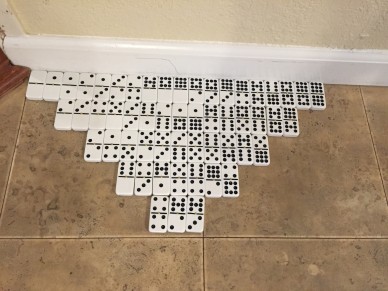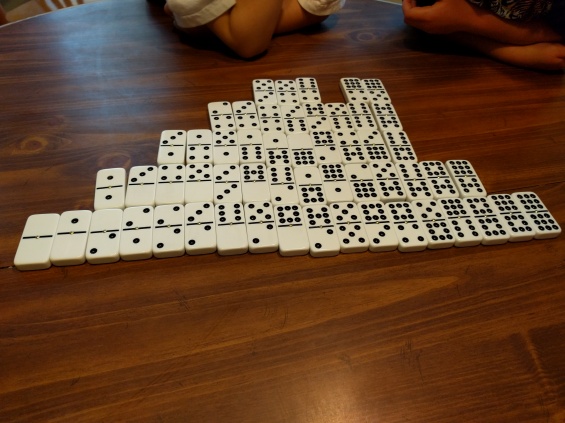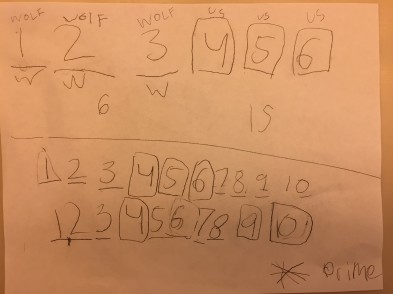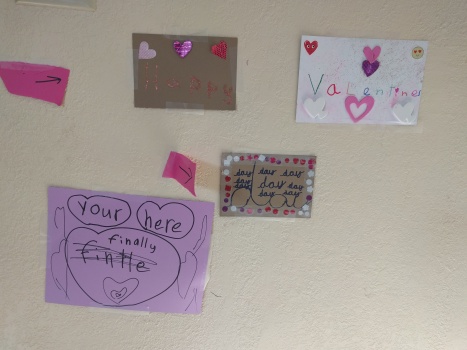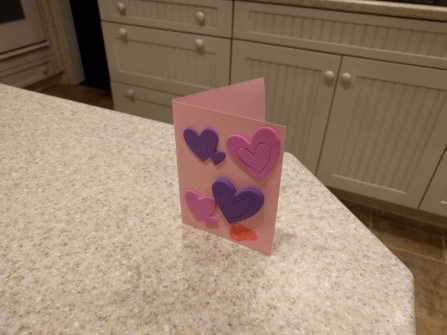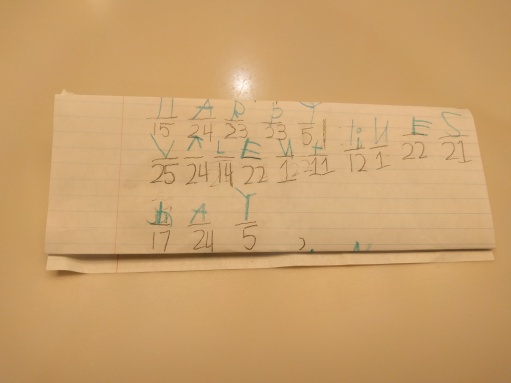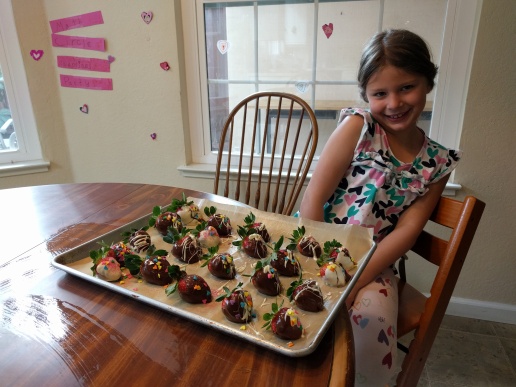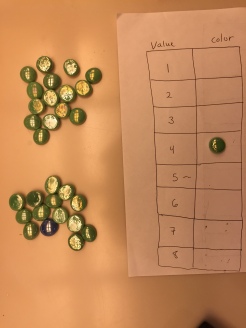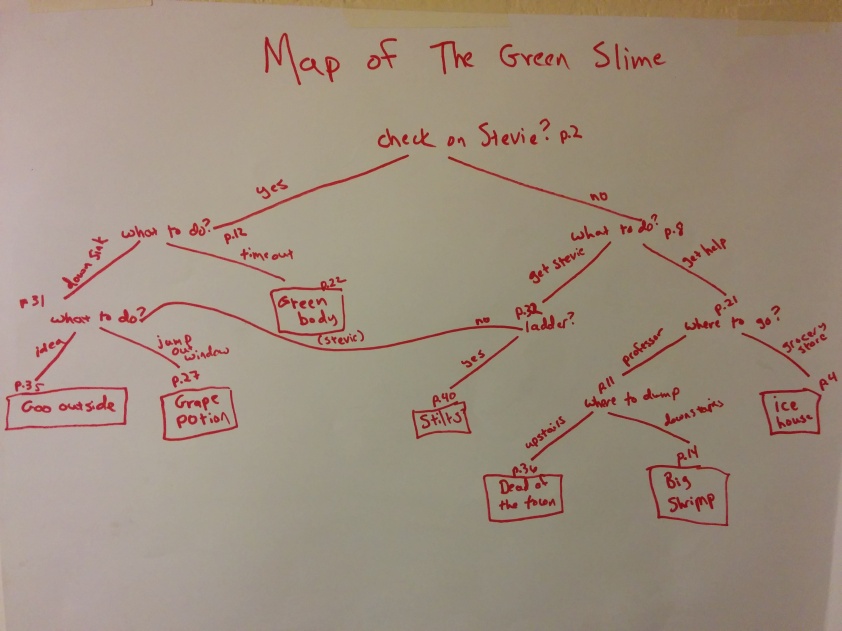The Activities
- Topic: Logic. Book: True Lies by Shannon. This book is from a series of logic / out-of-the-box-thinking books that I love. It has 10 or 15 short stories that each contain something that sounds like a lie. However, if you think carefully, you can find that the characters actually told the truth. For example, a kid baked cookies and was only allowed to each one cookie before dinner, but her appetite was ruined. How? Well…maybe the kid baked a huge cookie.
- Topic: Archimedes, Volume. I re-read part of the Archimedes chapter in Mathematicians Are People Too, the section about the discovery of volume and buoyancy. Archimedes figured out that a crown contained silver instead of gold because it displaced too much water (silver is less dense than gold). I told the kids that I was now the king, and they were Archimedes. I showed them two ‘amulets’ made of aluminum foil wrapped around quarters. I said I was afraid the craftsman had stolen some of the quarters I gave him, and used extra foil instead. I then asked how we could find out?
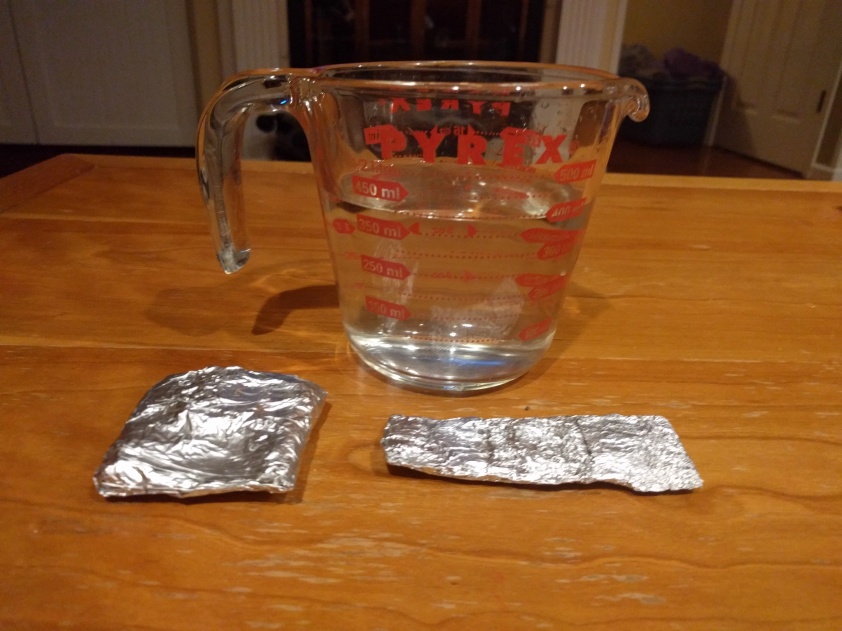
The two ‘amulets,’, and the water we used to test them.
- Topic: Decision Trees. I made a huge decision tree that classified 40 different Pokemon cards into a different pile for each kid. This decision tree spanned three pieces of paper! Here’s part of it:
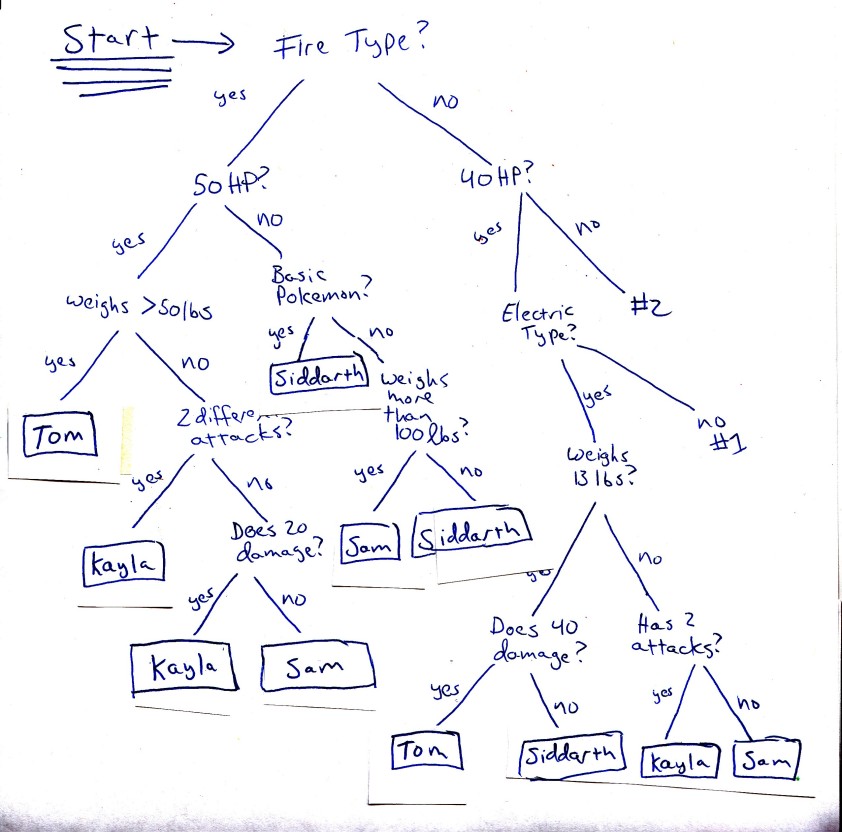
How did it go?
We had only three kids this week. The other two were out sick.
True Lies
The kids all loved this book, and wanted to keep going. We did the first 5 lies in about 15 minutes. I was able to solve all the lies pretty quickly. The kids solved several of them, after some discussion. For example, they came up with the idea of a big cookie, in the example above.
The hardest one was a king said someone could have land that could be surrounded by an ox hide. I helped the kids solve it by asking how they could make a piece of paper surround a large area? They still didn’t get it, so I said, what if you had scissors? Then they thought of cutting up the paper into strips.
Archimedes
Last week we read a chapter about the discoveries of Archimedes. A couple kids remembered it, but one of the kids this week was absent last week. So I re-read the 3 or 4 paragraphs about Archimedes, the king, and the crown that could have silver inside instead of gold.
Then I told the kids I was the king, and I had a craftsman make me an aluminum foil amulet out that should contain a certain number of quarters. I was afraid the craftsman had kept some of the quarters for himself, and used more foil so I wouldn’t know. I had an amulet that I had made, that definitely had the right number of quarters. How could we tell if the craftsman had lied?
One kid immediately suggested putting the amulets in water to see how much they raised the level. I asked if there was a simpler test we should do first? She suggested we should weigh the two amulets to make sure they were the same. I got out a kitchen scale, and we found they each weighed 3 oz. They both looked about the same size too, though they were different shapes.
Next I filled up a two-cup glass measuring cup. We tested the good amulet first, and saw the level raised a very small amount. Next we tested the unknown amulet, and we could see the water went up significantly more. The craftsman must have stolen some of the quarters! We then opened the two amulets and saw that the good amulet had 9 quarters inside. The bad amulet had lots more aluminum foil, and only 6 quarters. The craftsman had stolen 3 quarters.
I finished up by showing the kids that aluminum foil is much less dense than quarters. In fact, foil floats. They were pretty interested in this, and several kids tested out how much foil one quarter could sink.
Several kids said “That was fun!” as we were finishing this activity. After circle, my daughter continued to play with aluminum foil and water, wrapping various things in foil, and seeing if it would float or displace a lot of water.
Pokemon Decision Trees
The kids were really interested in the big decision tree, and the Pokemon cards. They were quite happy to see their names in the tree, and all quickly went to work. They wanted to know which Pokemon would be on their team.
I had made the tree so that every kid would end up with 8 Pokemon. However, after the first round, two kids had 10 Pokemon each. We then reclassified the two piles with too many, and ended up with a third pile that now had too many. I kept handing the cards out to different kids to check, but we ended up with one pile that kept having 9 cards in it. I personally checked each card, and finally found the one that was mis-classified.
The kids were all happy to look at which Pokemon they had randomly been assigned. My daughter really wanted to play some kind of math game with the Pokemon, but I didn’t have one prepared, so I just had them pick out their favorite and least favorite Pokemon (based on whatever characteristics they liked).


